This pesto brioche swirl bread is soft, fluffy, buttery, and savory, making it the perfect carb sponge to sop up a saucy pasta dish! Make the dough the night before and bake it off the next day, just in time for Italian night.
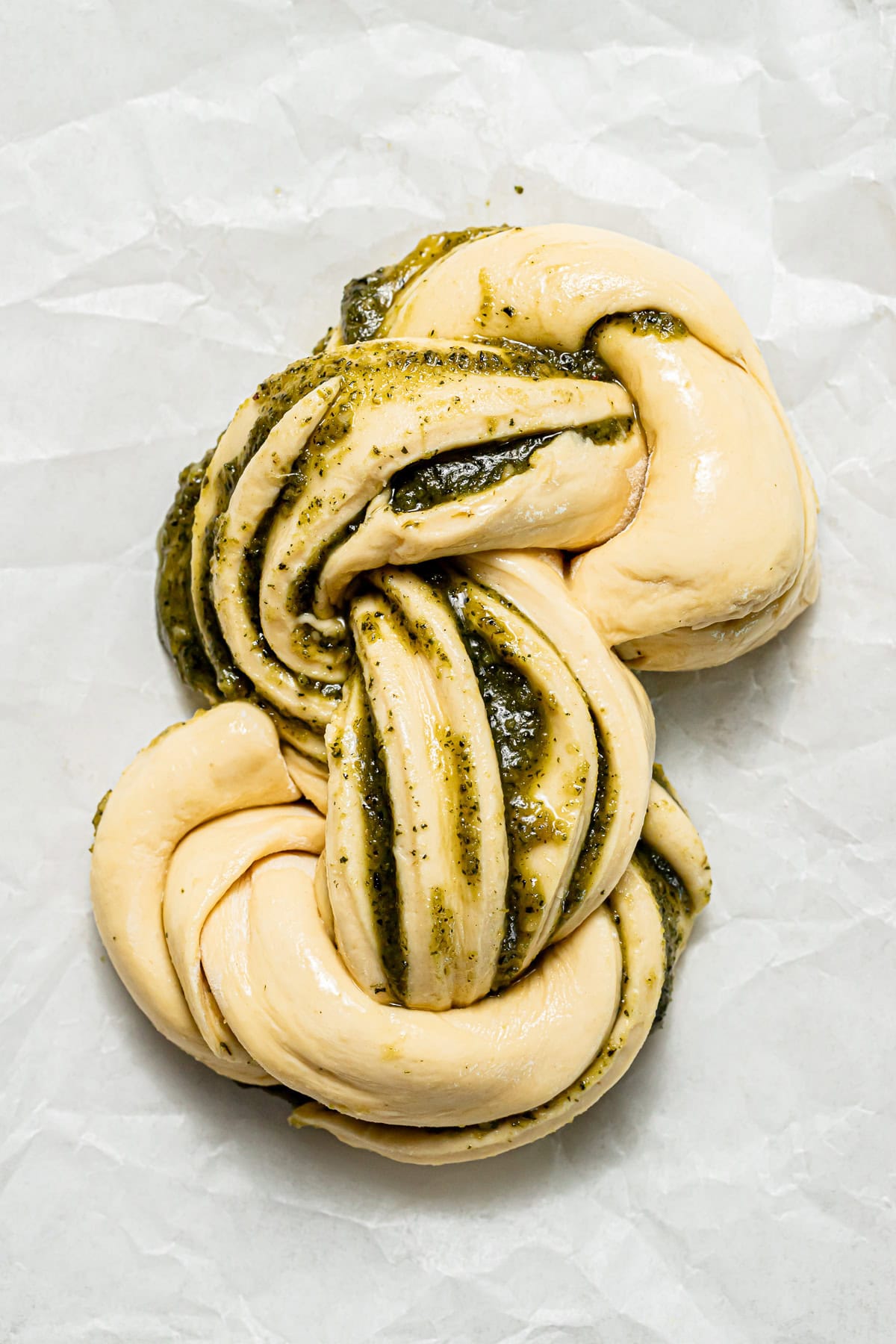
By now, you must know that brioche is my favorite thing to bake, and, trust me, after you make this bread, brioche will be your favorite too! As an enriched dough, brioche bakes up incredibly soft and flavorful. The swirled shape gives it a show-stopping effect too!
For more brioche recipes, try Overnight Brioche Bread, Maple Glazed Brioche Donuts, Chocolate Filled Brioche Donuts, and Strawberries & Cream Stuffed French Toast.
Jump to Recipe
Ingredient Notes
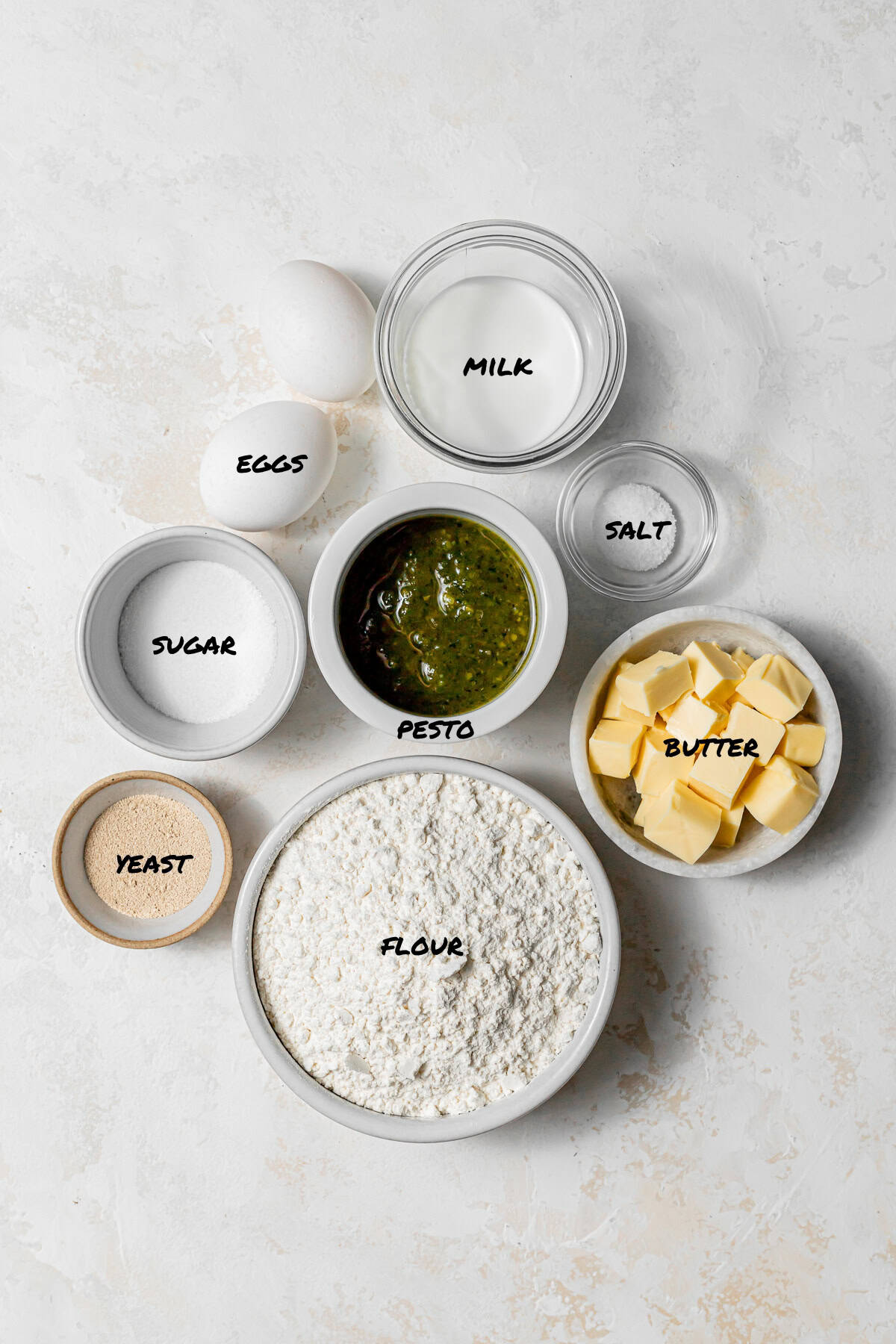
- Active Dry Yeast or Instant Yeast: If using active dry yeast, combine with milk and sugar and allow to sit for 15 minutes. If using instant yeast, there is no need to let the yeast sit in the mixture.
- Whole Milk: Use whole milk for optimum flavor, and warm the milk to about 110 degrees F to activate the yeast.
- Granulated Sugar: The sugar will need to be mixed in with the milk and yeast to help activate the yeast.
- Eggs: You’ll need to 2 eggs at room temperature.
- All-Purpose Flour: The best way to measure your flour, as well as the rest of the ingredients, is by weight. You can buy a good kitchen scale for around $10!
- Unsalted Butter: You’ll need about 6 tablespoon of unsalted butter at room temperature, which will need to be added one piece at a time to properly incorporate into the dough.
- Pesto: Be sure to use a pesto brand that you really love! I used Delallo!
See recipe card for full information on ingredients and individual quantities.
Step by Step Instructions
Here are step by step photos and instructions on how to make this pesto brioche swirl bread recipe! For the full ingredient list and method, see the recipe card at the end of this post.


STEP 1: Activate the yeast; Mix in eggs. In a medium bowl or glass measuring cup, heat the milk to 110 degrees F and stir in the sugar and yeast. If using active dry yeast, allow to sit for 15 minutes for the yeast to activate. If using instant yeast, simply move on to the next step. Mix the eggs and vanilla into the milk yeast mixture.
STEP 2: Add wet ingredients to dry. In the bowl of a stand mixer fitted with a dough hook attachment, mix the flour and salt together. Pour the wet ingredients into the flour and mix on low-medium speed for about 3 minutes, or until it forms a ball around the hook.


STEP 3: Mix in the butter. Add in a few pieces of butter at a time, allowing them to fully incorporate before adding more. Once all of the butter is incorporated, turn the mixer up to medium-high speed and mix for 8-12 minutes. The dough will eventually pull away from the sides of the bowl and have a silky smooth texture with minimal stickiness.
STEP 4: Perform windowpane test. To check if the dough is ready, tear off a small piece and carefully spread it out to see if you can see the light through it without it tearing. If it tears, mix for another minute or two and check again.


STEP 5: Proof. Once the dough is ready, transfer it to a lightly greased bowl, cover with plastic wrap, and allow to proof overnight in the fridge. Alternatively, you can let the dough rise in a warm place for about 1 hour or until doubled in size.
STEP 6: Roll out and add pesto. On a lightly floured surface, roll the dough out to rough rectangle about ¼" in thickness. Spread the pesto on in an even layer, then roll it up from the long side.
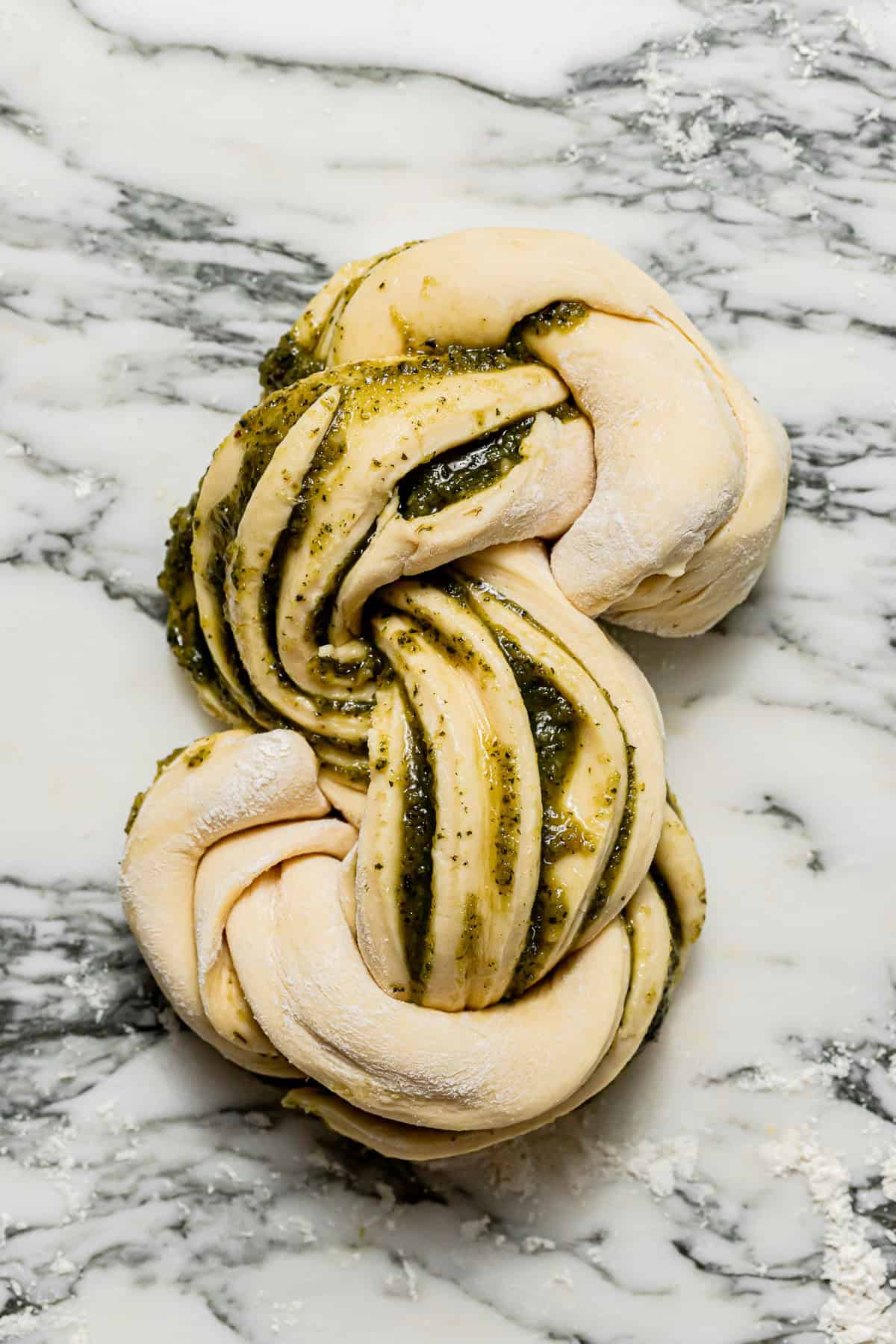
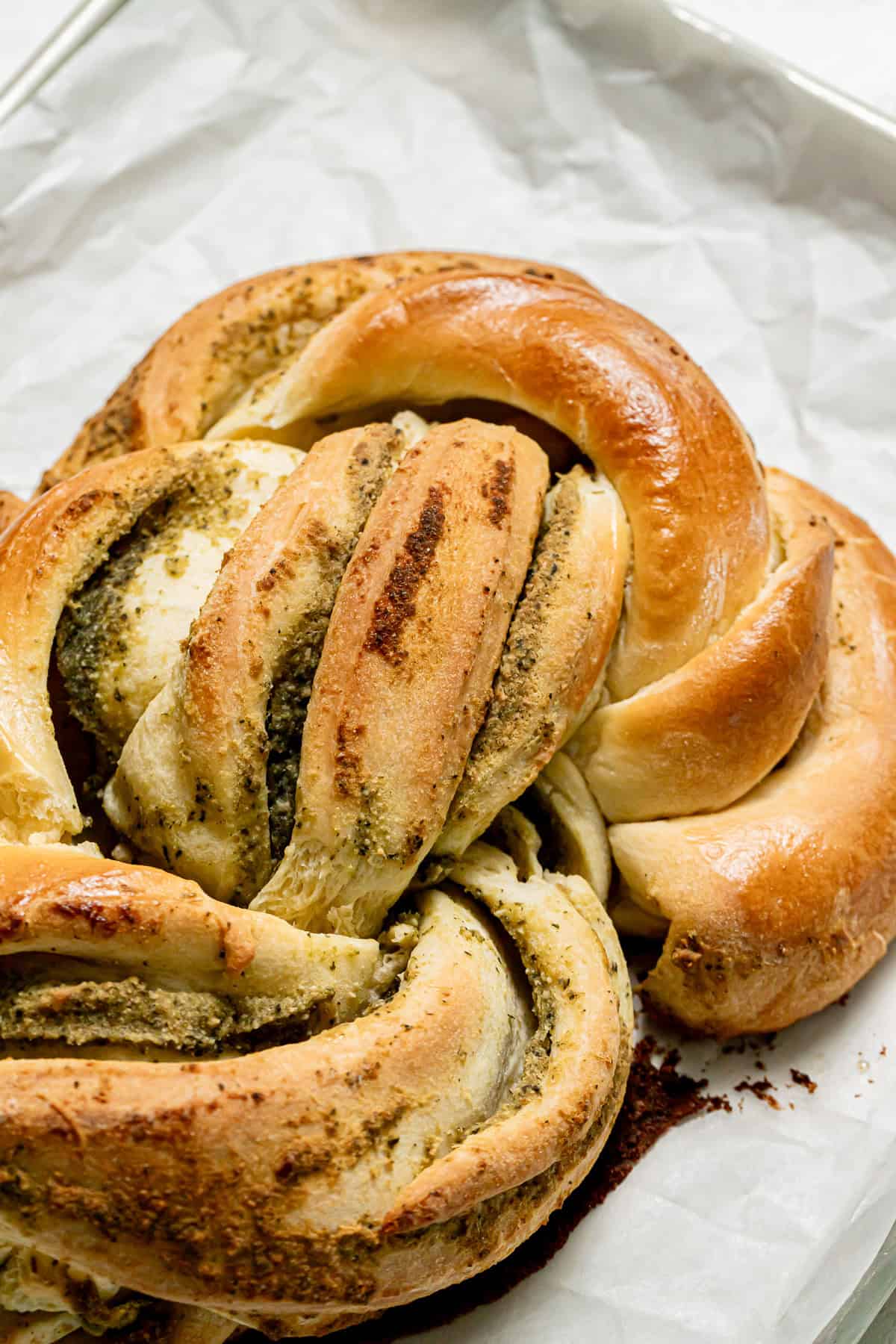
STEP 7: Shape dough, then proof. Cut the log down the middle, turn the inside layers upwards, and cross them over each other into a braid. Curl the ends into the middle, creating an S-shape. Transfer the shaped bread to the prepared baking sheet, then cover and allow to proof for about 20-30 minutes until the dough springs back slowly when pressed with a finger.
STEP 8: Bake. Brush the dough with an egg wash, then bake for 30-35 minutes until golden brown and no longer doughy in the center. Tent the bread with aluminum foil around the 20 minute mark to prevent it from browning too much. Allow the bread to cool completely before cutting.
Expert Baking Tips
- Proof the dough overnight: I recommend allowing your brioche dough to rise slowly overnight in the fridge. Cold dough is so much nicer to work with! But you can also let it proof at room temperature for one hour and make the brioche bread immediately.
- Bake the dough within 24 hours: To find that sweet spot between properly proofed with a developed flavor and over-fermented, I recommend giving the dough at least 5 hours to rise in the fridge, but no more than 24 hours.
- Brush the dough with an egg wash: To give the brioche loaf a deep golden, shiny crust, brush the dough with an egg wash made from one egg mixed with two tablespoons of water.
- Tent with aluminum foil: Tent the bread with aluminum foil around the 20 minute mark to prevent it from browning too much.
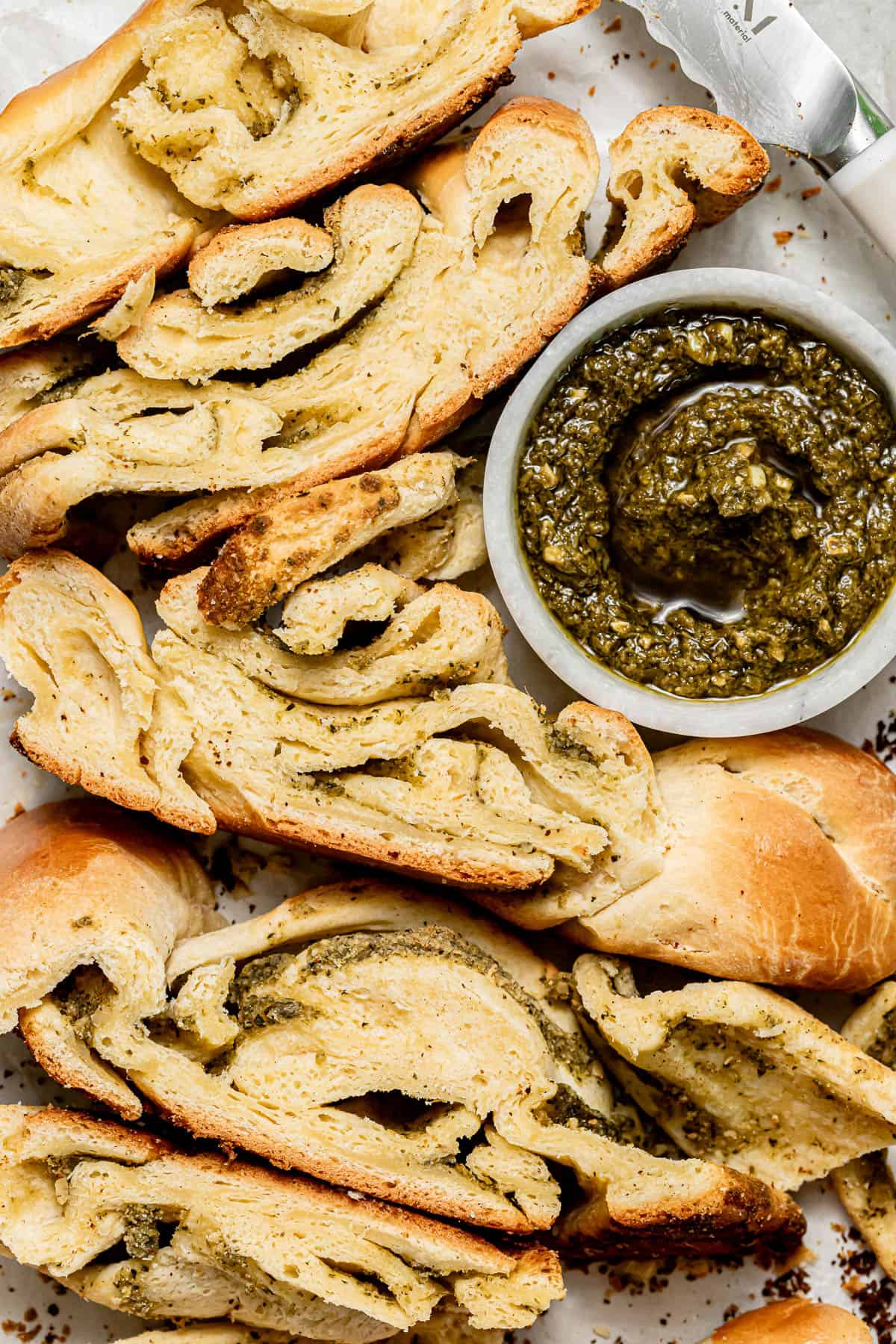
Recipe FAQs
Using a stand mixer with the dough hook, mix the wet and dry ingredients on low-medium speed for a few minutes until it forms a ball around the hook.
2. Slowly begin incorporating the room temperature butter as it mixes on medium speed. It is very important to use room temperature butter in order for it to incorporate properly.
3. Once all of the butter is incorporated, turn the speed up to high and mix for about 8 minutes or until the dough passes the windowpane test.
The windowpane test is used to tell when the brioche has developed enough gluten. To check if the dough is ready, tear off a small piece and carefully spread it out to see if you can see the light through it without it tearing. If it tears, mix for another minute and check again.
This brioche loaf is best the day it is baked, however it can be stored at room temperature in an airtight container for 1-2 days or in the freezer for up to 3 months.
Baking in Grams
All of the recipes on this blog are carefully developed with gram measurements so you can easily recreate them in your own kitchen with success. Volume measurements are extremely inaccurate and leave room for significant errors. Not all measuring cups are made equally, so your one cup of flour will be different from my one cup of flour. By providing precise measurements in grams (aside from minor ingredients, which are given in tsp/tbsp), you can make these recipes accurately and with less cleanup! All you need is this kitchen scale.
If this still isn't enough to convince you, I have provided volume measurements in the recipe card. If you are interested in understanding the conversions, this is the best conversion chart.
But trust me, once you try baking in grams you'll never turn back!
Happy baking! x
Other brioche recipes to try
If you tried this recipe, I'd love to know how it turned out for you! Leave a star rating & review below and post a picture (or video!) on Instagram and tag me so I can see your bakes! Not ready to make this recipe yet? Click the heart button on the right of your screen to save it for later 🙂
📖 Recipe
Pesto Brioche Swirl Bread
Ingredients
- 113 g (½ cup) whole milk, warmed to 110 degrees F
- 20 g (1 ½ tablespoon) granulated sugar
- 2 ¼ teaspoon active dry yeast
- 2 eggs, room temp
- 300 g (2 ½ cups) all-purpose flour
- ½ teaspoon salt
- 85 g (6 tablespoon) unsalted butter, room temp
- 113 g (½ cup) basil pesto
- egg wash, 1 egg + 2 tablespoon water
Instructions
- In a glass measuring cup, heat the milk to 110 degrees F and stir in the sugar and yeast. Allow to sit for 15 minutes for the yeast to activate.
- Mix the eggs into the milk yeast mixture.
- In the bowl of a stand mixer fitted with a dough hook, mix the flour and salt together.
- Pour the wet ingredients into the flour and mix on low-medium speed for about 3 minutes, or until it forms a ball around the hook.
- Add in a few pieces of butter at a time, allowing them to fully incorporate before adding more.
- Once all of the butter is incorporated, turn the mixer up to medium-high speed and mix for 8-12 minutes. To check if the dough is ready, tear off a small piece and carefully spread it out to see if you can see the light through it without it tearing. If it tears, mix for another minute or two and check again.
- Once the dough is ready, transfer it to a lightly greased bowl, cover, and allow to proof overnight in the fridge. Alternatively, you can let the dough rise in a warm place for about 1 hour or until doubled in size.
- When ready to bake the bread, preheat the oven to 350 degrees F and line a baking sheet with parchment paper.
- On a lightly floured surface, roll the dough out to rough rectangle about ¼" in thickness. Spread the pesto on in an even layer, then roll it up from the long side. Cut the log down the middle, turn the inside layers upwards, and cross them over each other into a braid. Curl the ends into the middle, creating an S-shape.
- Transfer the shaped bread to the prepared baking sheet, then cover and allow to proof for about 20-30 minutes until the dough springs back slowly when pressed with a finger.
- Brush the dough with an egg wash, then bake for 30-35 minutes until golden brown and no longer doughy in the center. Tent the bread with aluminum foil around the 20 minute mark to prevent it from browning too much. Allow the bread to cool completely before cutting.
Notes
- Proof the dough overnight: I recommend allowing your brioche dough to rise slowly overnight in the fridge. Cold dough is so much nicer to work with! But you can also let it proof at room temperature for one hour and make the brioche bread immediately.
- Bake the dough within 24 hours: To find that sweet spot between properly proofed with a developed flavor and over-fermented, I recommend giving the dough at least 5 hours to rise in the fridge, but no more than 24 hours.
- Brush the dough with an egg wash: To give the brioche loaf a deep golden, shiny crust, brush the dough with an egg wash made from one egg mixed with two tablespoons of water.
- Tent with aluminum foil: Tent the bread with aluminum foil around the 20 minute mark to prevent it from browning too much.

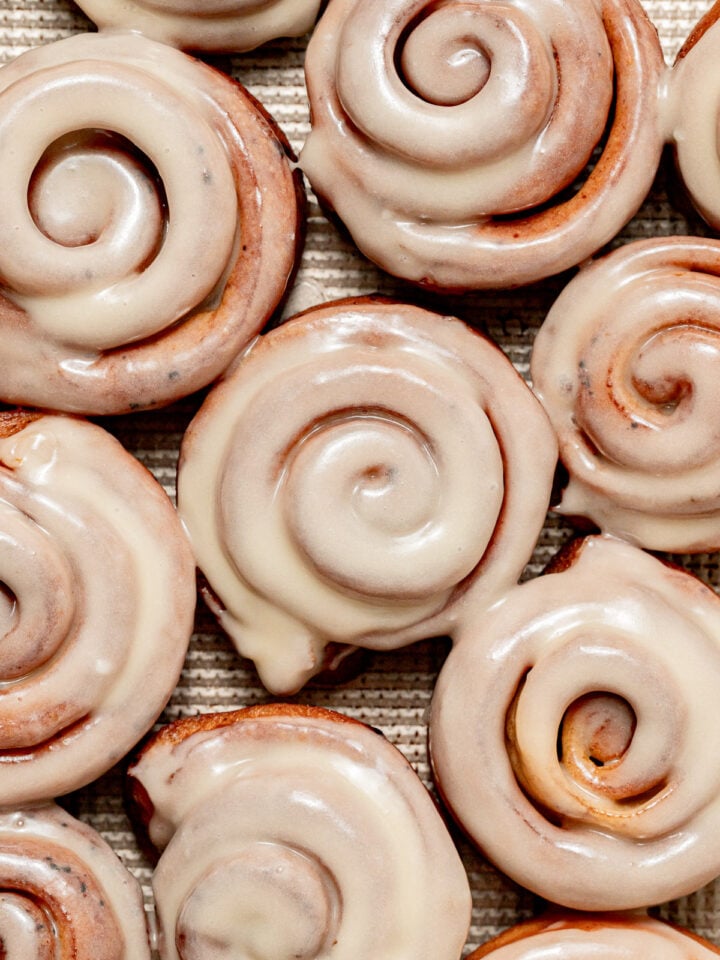
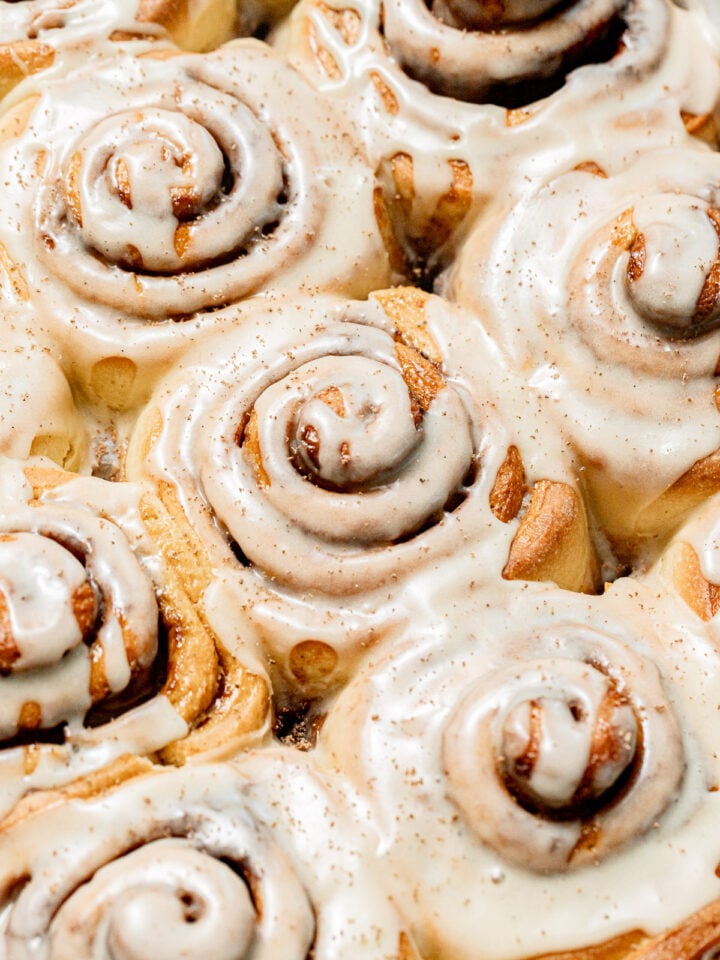
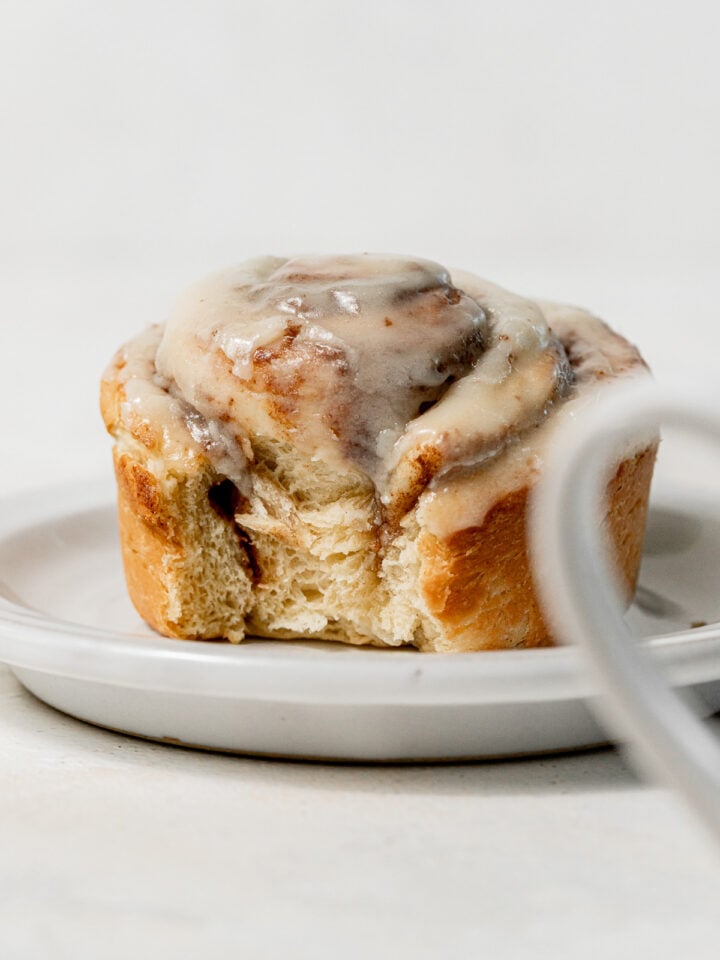
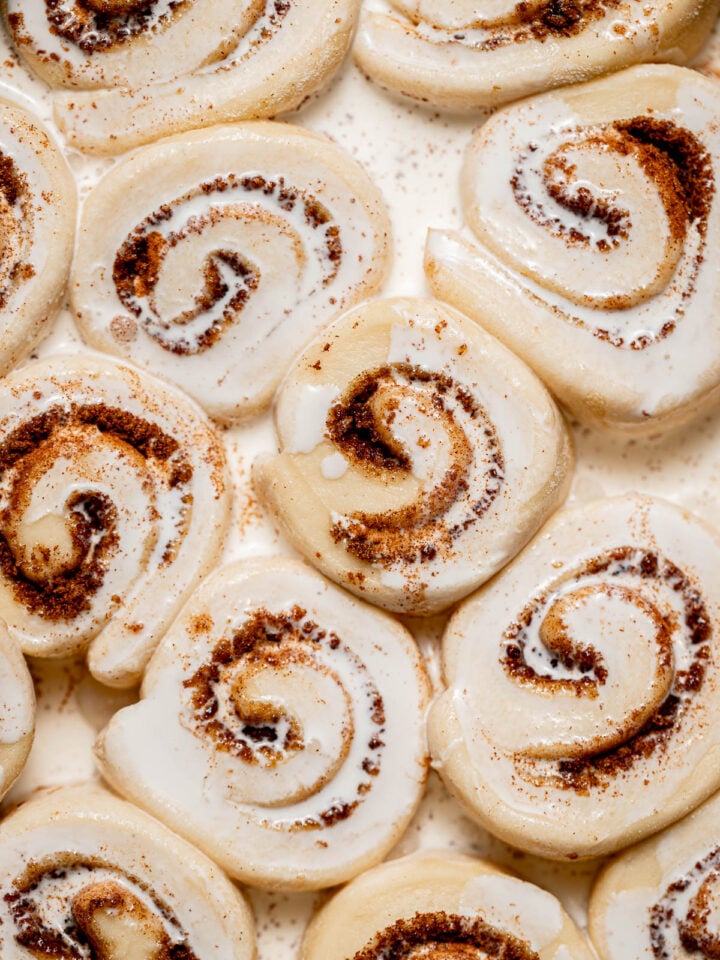

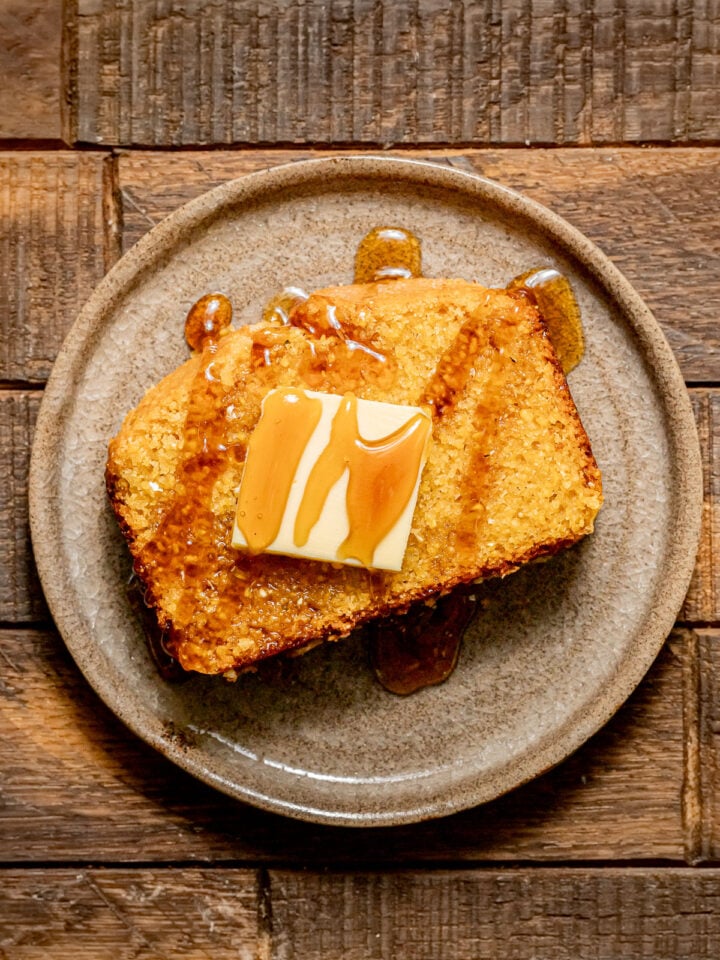
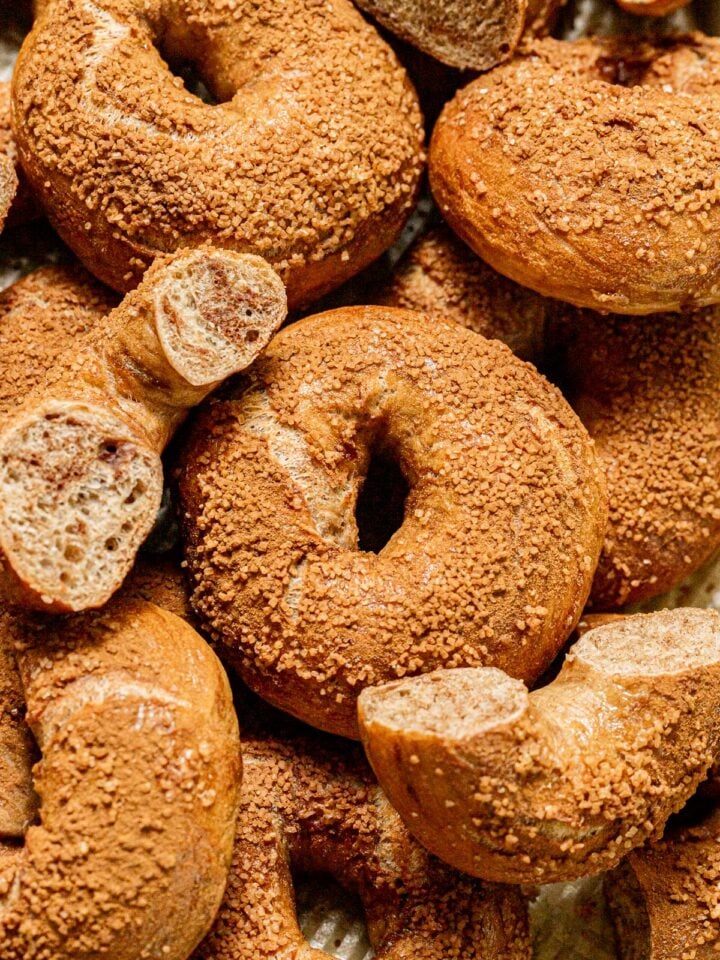

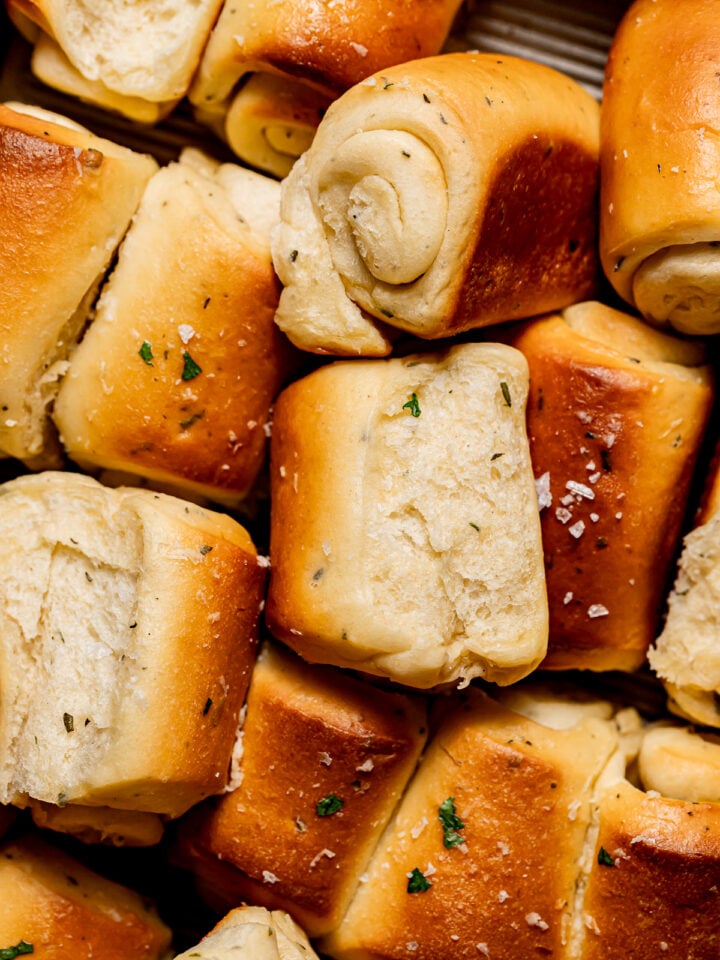
Tali Millo says
Just wondering why it says to add vanilla into the mixture... I'm worried to start this recipe as I feel like there may be an error and two are meshed together.
Sloane says
Yes, that was an error - sorry about that!
Maddy says
How do you store this bread? In the fridge or on counter?
Sloane says
Personally, I would freeze any leftovers so it's perfectly fresh when reheated! Otherwise, it should last a couple days in an airtight container at room temperature.